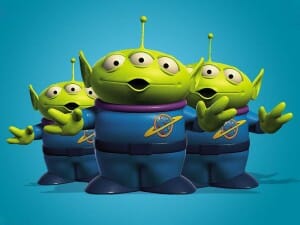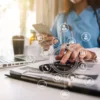
Introduction
Animation bridges imagination and reality, captivating audiences worldwide. Today’s hits like “Toy Story” and “The Lion King” stand on the shoulders of ancient techniques. Long before the term “animation” described the art of bringing drawings to life, people were already exploring motion depiction. Animation involves creating the illusion of movement by sequencing drawings, models, or puppets. Our journey into the past reveals the early attempts at animation, showing the creativity of our ancestors in capturing motion. Join us as we explore the origins of this art form and how it evolved into the animation we know and love today.
The Roots of Animation: Paleolithic Era to Ancient Civilizations
The story of animation begins long before the advent of modern cinema, rooted in the earliest human attempts to depict motion. In the Paleolithic era, around 40,000 to 10,000 BC, ancient artists etched cave drawings with figures that had multiple legs, suggesting movement, such as running or walking. These primitive sketches were the first steps towards animation, illustrating humanity’s innate desire to capture the essence of life and motion.
Moving forward in time, ancient Egyptian murals continued this tradition. One notable mural in a tomb displays a sequence of images, each slightly different from the last, creating the impression of motion. Similarly, a 5,200-year-old bowl from Iran features a series of painted images around its circumference, depicting a goat leaping towards a tree — each frame capturing a different phase of the jump.
These early artistic endeavors reflect a fundamental human fascination with movement and storytelling. While these ancient creators lacked the technology to bring their drawings to life in the way modern animation does, their work laid the groundwork for the art form. They used sequential drawings to suggest motion, a technique central to animation, marking the dawn of a journey that would eventually lead to the rich, dynamic world of animated storytelling we enjoy today.
Leonardo da Vinci’s Contribution to Animation
Leonardo da Vinci, the Renaissance master, unknowingly contributed to the foundations of animation through his detailed anatomical studies. Among his vast collection, the Windsor Collection stands out, showcasing seven drawings that meticulously capture the human figure in a sequence of movements. These drawings, focusing on the muscles of the neck, shoulder, chest, and arm, demonstrate da Vinci’s fascination with human anatomy and motion.
Da Vinci’s work illustrates a sequence of movements with such precision and detail that it closely mirrors the principles of modern animation, where a series of drawings can depict the fluid motion of a subject. Although created for scientific study, these drawings reveal an early understanding of how motion can be broken down into individual frames, a technique essential to animation.
His exploration of human motion from multiple angles and through various stages of movement offered insights that, centuries later, animators would use to create lifelike animations. Leonardo da Vinci’s contributions highlight the intersection of art, science, and animation, underscoring the importance of observation and detail in depicting realistic motion. While da Vinci never intended his studies for animation, they embody the art form’s core principles, showcasing the timeless human endeavor to capture the essence of movement.
The Evolution of Animation Techniques
The journey of animation from ancient art to the sophisticated storytelling medium we know today is marked by significant milestones. The evolution began with static images designed to suggest motion, leading to the invention of devices that could simulate movement.
A pivotal moment in animation history came in 180 AD with the Chinese invention of the Zoetrope, known as the “Wheel of Life.” This cylindrical device featured vertical slits through which viewers could look to see a series of drawings on the inner surface. As the cylinder spun, the drawings appeared to move, creating a clear perception of motion. This ingenious mechanism was a monumental leap forward, allowing people to not only imagine but also visually experience animated sequences.
The Zoetrope was more than a novel invention; it was a significant advancement in the quest to capture and portray motion. It bridged the gap between static images and the illusion of life, providing a glimpse into the future possibilities of animation. This development underscored the human fascination with replicating life’s dynamism and laid the groundwork for future innovations in animation techniques.
Through these early devices, animation began to take shape as a form of entertainment and art, setting the stage for the cinematic and digital animations that would captivate audiences around the world. The Zoetrope’s creation marked a crucial step in animation’s evolution, demonstrating the potential of sequential art to create the illusion of life and movement.
Austin Visuals’ Respect for Ancient Animation

At Austin Visuals 3D Animation Studio, we hold a deep admiration for the creativity and ingenuity that ancient pioneers of animation demonstrated. Their fascination with depicting motion mirrors our own, and studying the history and evolution of these early inventions inspires our work. The inventiveness seen in ancient times, from Paleolithic cave paintings to the invention of the Zoetrope, underscores a universal desire to capture life’s dynamic essence.
This historical perspective enriches our approach to modern 3D animation, reminding us that at the heart of our industry lies a centuries-old human endeavor to animate the inanimate. It’s this lineage of innovation that we strive to continue, blending timeless storytelling techniques with the latest technology to create animations that resonate with audiences today.
Inspired by the past, we at Austin Visuals are excited about the future of animation. We embrace the challenge of pushing creative boundaries, just as those before us did with their early attempts at motion depiction. Whether it’s through exploring new animation technologies or reimagining traditional methods like the Zoetrope for contemporary audiences, our goal is to honor the legacy of ancient animators with our work.
Our respect for the history of animation drives us to excel in our craft, ensuring that every project we undertake at Austin Visuals is not just a service rendered but a tribute to the art form’s rich heritage.
Conclusion
The journey from the earliest forms of animation found in ancient cave paintings and the Zoetrope to today’s advanced 3D animations showcases humanity’s enduring passion for storytelling through motion. At Austin Visuals Animation Company, we are inspired by this rich history as we forge ahead, creating animations that blend artistry with the latest technological advancements.
Understanding the roots of animation not only deepens our appreciation for this art form but also fuels our creativity and innovation. As we continue to explore and expand the boundaries of what animation can achieve, we carry forward the legacy of those early pioneers who first sought to capture the illusion of life in motion.
We invite you to join us in this ongoing journey of discovery and creation. Whether you’re looking to bring a complex concept to life, tell a compelling story, or captivate an audience with stunning visuals, Austin Visuals is here to help you realize your vision. Let’s create something extraordinary together, drawing on the timeless allure of animation to connect with viewers in new and meaningful ways.
Together, we celebrate the ancient art of animation and its evolution into the dynamic and powerful medium it is today. At Austin Visuals, we’re not just creating animations; we’re continuing a tradition of innovation that spans millennia, and we’re excited to see where this journey will take us next.
Have A Project You Want To Discuss? Drop us a line!




